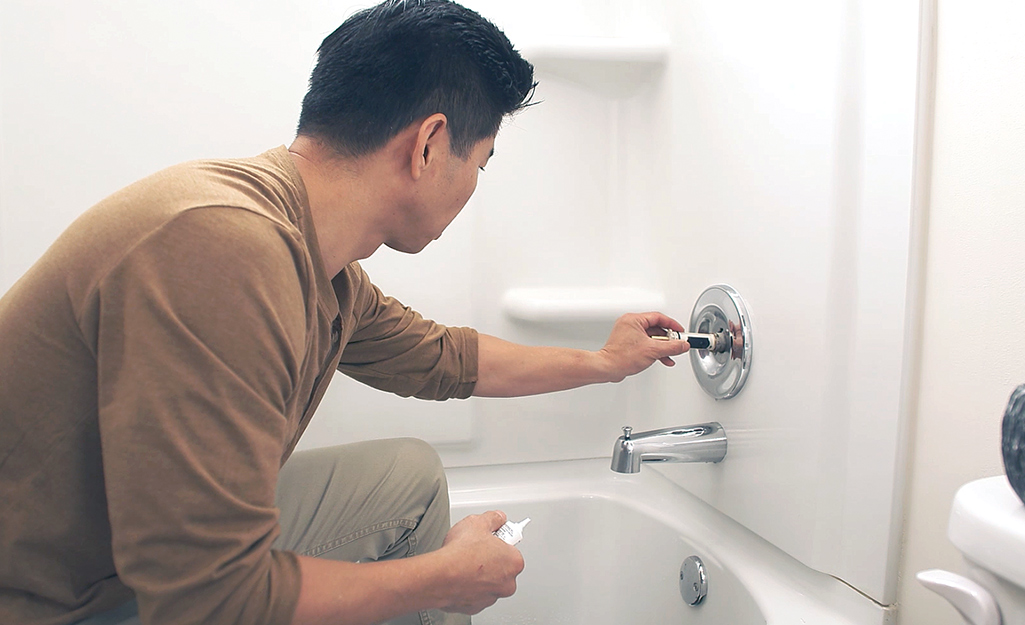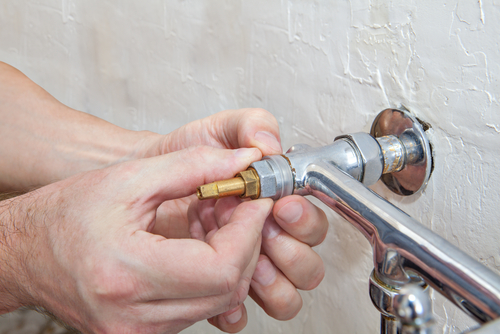Discovering the Value of Fixing a Malfunctioning Faucet
Discovering the Value of Fixing a Malfunctioning Faucet
Blog Article
What're your insights and beliefs about Why Are My Faucets Dripping (And Can I Fix It Myself)??

Trickling faucets could seem like a minor aggravation, but their effect surpasses just the inconvenience of the audio. From drainage to incurring unnecessary financial costs and health and wellness threats, disregarding a dripping tap can result in numerous repercussions. In this article, we'll delve into why it's important to address this usual household problem quickly and successfully.
Wastefulness of Water
Environmental Impact
Trickling taps add substantially to water wastage. According to the Environmental Protection Agency (EPA), a solitary tap dripping at one drip per second can lose greater than 3,000 gallons of water per year. This not only stress water resources however also affects communities and wildlife based on them.
Step-by-Step Overview to Fixing a Dripping Tap
Tools Required
Before attempting to repair a leaking faucet, gather the necessary devices, including an adjustable wrench, screwdrivers, substitute components (such as washers or cartridges), and plumber's tape.
Common Tap Issues and Their Solutions
Recognize the kind of faucet and the particular concern triggering the drip. Typical problems consist of worn-out washers, rusty valve seats, or faulty O-rings. Describe producer guidelines or on the internet tutorials for step-by-step support on repairs.
Financial Prices
Increased Water Expenses
Past the environmental effect, dripping faucets can blow up water expenses substantially. The accumulated wastefulness with time translates right into higher utility expenditures, which could have been prevented with timely fixings.
Potential Residential Or Commercial Property Damages
In addition, prolonged dripping can lead to damage to fixtures and surfaces bordering the tap. Water buildup can create discoloration, rust, and even structural issues if left ignored, leading to extra repair work costs.
Wellness Problems
Mold And Mildew and Mildew Growth
The constant visibility of wetness from a dripping tap produces a perfect atmosphere for mold and mold growth. These fungis not just jeopardize interior air high quality but likewise pose wellness risks, especially for individuals with breathing problems or allergies.
Waterborne Conditions
Stagnant water in dripping taps can end up being a breeding place for germs and other pathogens, enhancing the danger of waterborne conditions. Contaminants such as Legionella bacteria flourish in stagnant water, potentially resulting in severe health problems when consumed or breathed in.
Do it yourself vs. Specialist Repair
Advantages and disadvantages of DIY Repair Work
While some might try to fix a trickling tap themselves, do it yourself repair work include their very own set of difficulties. Without proper knowledge and devices, do it yourself attempts can exacerbate the concern or lead to insufficient repairs, prolonging the problem.
Advantages of Hiring an Expert Plumber
Working with a specialist plumber ensures that the underlying source of the trickling faucet is attended to successfully. Plumbing technicians have the proficiency and equipment to identify and repair tap concerns efficiently, conserving time and reducing the threat of further damage.
Environmental Obligation
Private Payment to Preservation
Taking duty for taking care of trickling taps straightens with more comprehensive initiatives towards water preservation and ecological sustainability. Every individual's actions collectively make a significant impact on preserving priceless sources.
Lasting Living Practices
By focusing on timely repair work and adopting water-saving habits, people contribute to sustainable living techniques that profit both present and future generations.
Safety nets
Routine Maintenance Tips
To stop trickling faucets, execute routine upkeep such as cleaning up aerators, evaluating for leaks, and changing worn-out components quickly. In addition, consider setting up water-saving devices or updating to much more effective components.
Value of Prompt Repairs
Attending to trickling faucets as quickly as they're discovered prevents further water wastage and possible damages, inevitably saving both water and money over time.
Effect On Property Value
Perception of Well-Maintained Home
Preserving a building in good condition, consisting of resolving upkeep problems like dripping taps, boosts its viewed value and charm among possible purchasers or renters.
Influence on Resale Worth
Features with well-kept plumbing fixtures, consisting of faucets, command greater resale values in the realty market. Addressing trickling faucets can add to a favorable impression during property assessments and negotiations.
Final thought
Resolving a dripping faucet exceeds plain convenience; it's a vital action towards conserving water, decreasing financial costs, and protecting health and wellness and building. Whether via do it yourself repairs or expert help, taking action to deal with trickling taps is a little yet impactful method to promote responsible stewardship of sources and add to a healthier, more lasting future.
Why Are My Faucets Dripping (And Can I Fix it Myself)?
Causes of a Dripping or Leaking Faucet
Whether you’re hearing drops of water falling and hitting a sink, or noticing water ooze out from the base of the spout, you shouldn’t ignore a dripping or leaking faucet. And, the good news is, sometimes you can fix the problem yourself.
In this article, we’ll review a few common causes of dripping and leaky. We’ll also walk you through some basic ways to find the problem and handle it without calling anyone — and let you know when to call in a pro.
But, no matter what the cause, or whether you can handle it on your own, the sooner you address it, the better.
Each drip may be a tiny amount of water. But, they all add up quickly. According to the U.S. Geological Survey, one faucet losing one drop every 20 seconds — five a minute — wastes around a liter of water every day, and 173 gallons a year.
Add in more than one in your house, and it’s a lot of water to waste. So, we’ll help you get to the bottom of things quickly.
Four Reasons Your Faucet May Be Dripping
Aerator is Damaged or Unseated Valve Seat is Corroded O Ring is Loose or Worn Out Part of the Assembly is Loose Aerator is Damaged or Unseated
If you unscrew the end of your faucet, you’ll find the aerator. It’s the little stem piece with a screen on it that shuts off the water circulation.
If it’s damaged, or if it’s not sitting right, it will allow water to pass through.
Valve Seat is Corroded
Next is the valve seat, which is connected to the washer. If the washer wasn’t in place correctly, then it could have ground against the seat. Over time, this damages the valve seat.
The problem could also be corrosion: Over time, the part has worn out, and it’s now allowing water to pass through.
O Ring is Loose or Worn Out
Since the o ring is only a small rubber gasket, it’s a common reason why the faucet is dripping. You’ll find it at the base of the faucet, and it’s there to keep water from coming out where it’s not supposed to.
However, it’s common for the o ring to wear out over time. When it does, you’ll notice a drip.
Part of the Assembly is Loose
So far, we’ve looked at a few small, specific parts. But, the problem could be anywhere in the assembly if something’s out of place.
Even if a part isn’t damaged, over time, it may have become loose or dislodged. It could be the parts we mentioned, or the aerator at the tip of the faucet, the stem itself,
Can I Fix a Leaky Faucet Myself?
Depending on the problem, and how handy you are, there’s a chance you can fix a leaky faucet without calling a professional. But, you do run the risk of making the problem worse.
If it’s a small drip, you can certainly try a few troubleshooting tactics. We’ll walk you through them in a moment.
But, no matter what, your first step should be shutting off the water coming into the faucet. You should find a shutoff valve under the sink on the pipes leading to it. Turn each one clockwise until they close tightly.
Next, make sure you have the right tools for whatever you’re attempting. It’s tempting to make do with what you have. But, you need the right ones for a reason: You’re often dealing with small parts that can break if you handle them carelessly.
If you’re feeling confident, here are some places to start.
Items Near the Tip of the Faucet
A few of the parts we mentioned — particularly the valve seat and washer — are located at the tip of the faucet where the water comes out. They’re easy to access, making it a good place to start.
Check the O Ring
To check the o ring, you’ll need to take off the spout at the base. It’s easiest on kitchen sinks with long spouts, versus the smaller, bulkier base on most bathroom sinks.
Either way, this can be tricky, so do it carefully and don’t force anything. If it’s not coming right off, you’re much better off calling in a pro than possibly breaking something.
For a kitchen sink, there’s usually a nut or coupling assembly at the base of the spout. These often slide off easily without using any tools.
Once you’ve disassembled those parts, gently but forcefully twist off the spout.
Then, you can see the o rings. There should be two of the rubber gaskets on the base. If they look worn or damaged, replace them, and see if that solves the problem.

Hopefully you liked our post on Why Are My Faucets Dripping (And Can I Fix It Myself)?. Many thanks for taking a few minutes to browse our posting. Those who liked our page if you please remember to pass it around. I appreciate your readership.
Report this page